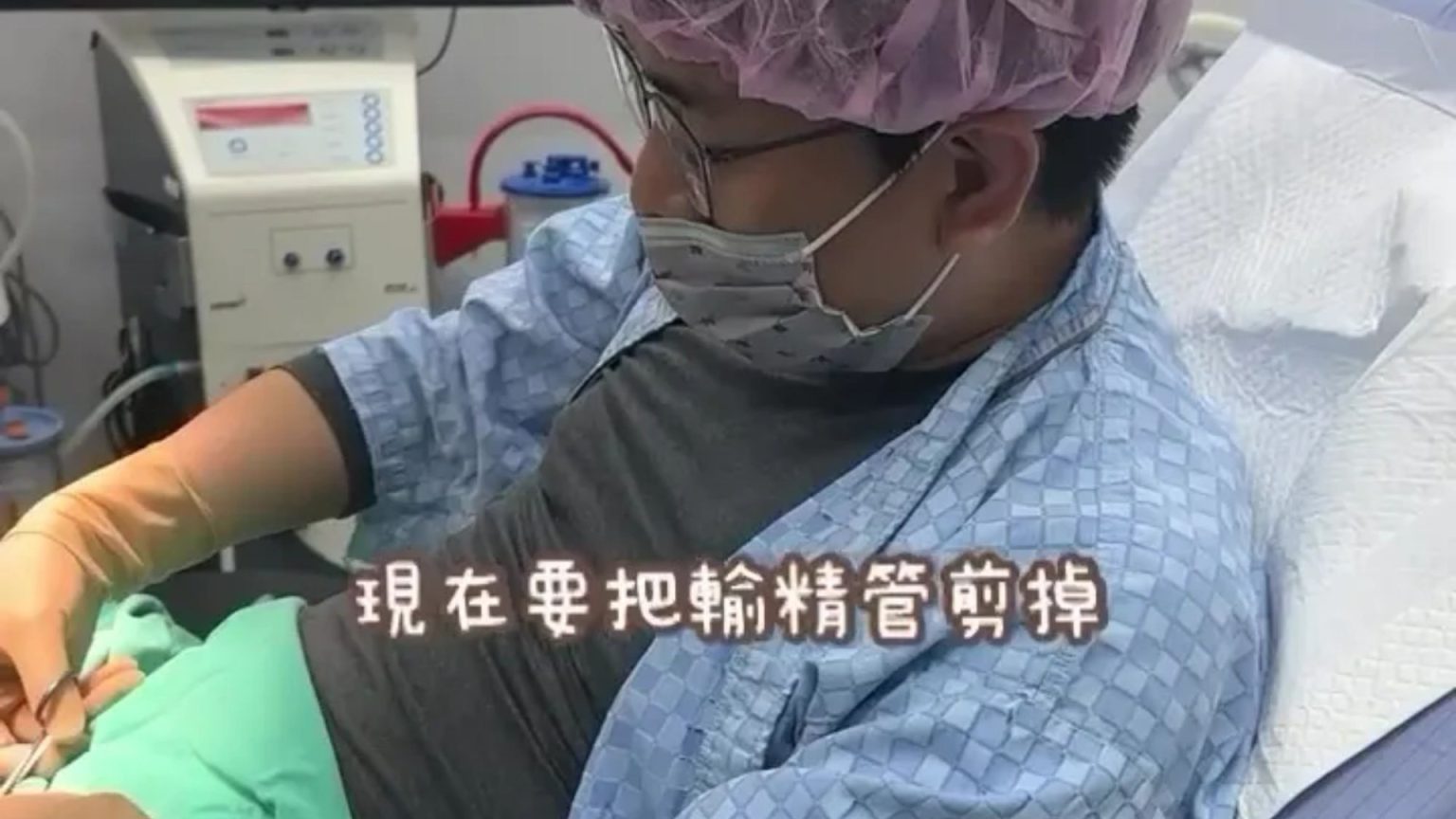Dr. Chen Weinong, a plastic surgeon and father of three from Taiwan, performed a vasectomy on himself, documenting the procedure in a video that quickly went viral. His motivation, he stated, was to provide a “gift” to his wife, ensuring they would have no more children. While vasectomies are a common form of male sterilization, performing the surgery on oneself is highly unusual. Dr. Chen, acknowledging the peculiarity of his action, issued a strong warning against self-treatment, emphasizing the video’s educational, rather than instructional, purpose.
The video captures Dr. Chen, fully conscious under local anesthesia, lying back in a surgical chair. He methodically uses surgical instruments, including a scalpel and clamp, to perform the procedure. The video shows a moment where he recoils, seemingly in pain, but quickly resumes the process. He completes the surgery by stitching himself up with catgut, a natural surgical thread derived from animal intestines. He later described the sensation of touching and suturing his own urethra as “strange.” While Dr. Chen performed the surgery himself, he had the support of a urologist and his wife, Dr. Zhang Fengshu, who also holds surgical and plastic surgery licenses, present during the procedure.
Dr. Chen explained his reasoning for self-surgery, stating that his expertise and understanding of the sensitive area led him to believe he was best equipped to perform the procedure safely. He emphasized the sterility of the operation and the adherence to proper surgical steps. He also reported a smooth recovery, experiencing only some pain on the night of the surgery, feeling completely normal the following day. His intention in sharing the video, he reiterated, was solely to share a personal experience.
The video garnered millions of views across various social media platforms, sparking both curiosity and concern. This is not the first documented case of self-vasectomy; a similar incident involving a GP in the UK was reported in 2001. While Dr. Chen’s case highlights the potential for self-surgery in highly specialized individuals, it underscores the importance of seeking professional medical care for such procedures.
A vasectomy is a minor surgical procedure designed to achieve permanent male sterilization. It involves cutting, blocking, or sealing the vas deferens, the tubes that transport sperm from the testicles to the penis. This prevents sperm from entering the ejaculate, effectively eliminating the possibility of pregnancy. Vasectomies are typically performed under local anesthesia, making them a relatively painless procedure. The most discomfort often arises from the anesthetic injection itself. Post-operative discomfort, including swelling and bruising, is generally mild and manageable with over-the-counter pain medication.
The procedure typically lasts 15-30 minutes, and its success rate is remarkably high, exceeding 99%. This translates to roughly one in 2,000 men experiencing a pregnancy after the procedure. While highly effective, a vasectomy does not protect against sexually transmitted diseases, and alternative forms of contraception should still be used. Though rare, there’s a slight chance of recanalization, where the severed ends of the vas deferens reconnect, restoring fertility. Regular post-vasectomy semen analyses are recommended to confirm the absence of sperm and ensure the procedure’s effectiveness.
Dr. Chen’s self-vasectomy, while medically sound in his specific context due to his extensive surgical expertise and the presence of medical professionals, should not be misinterpreted as an endorsement of self-surgery. It remains crucial to emphasize the importance of consulting with qualified medical professionals for any surgical procedure, including vasectomies. The risks associated with self-surgery, even for experienced surgeons, are significant and can include infection, complications, and long-term health issues. While Dr. Chen’s case may be an intriguing anecdote, it should not detract from the standard practice of seeking professional medical care for such procedures. The video, albeit educational in its depiction of the surgical steps, should not be perceived as a guide for self-treatment.




